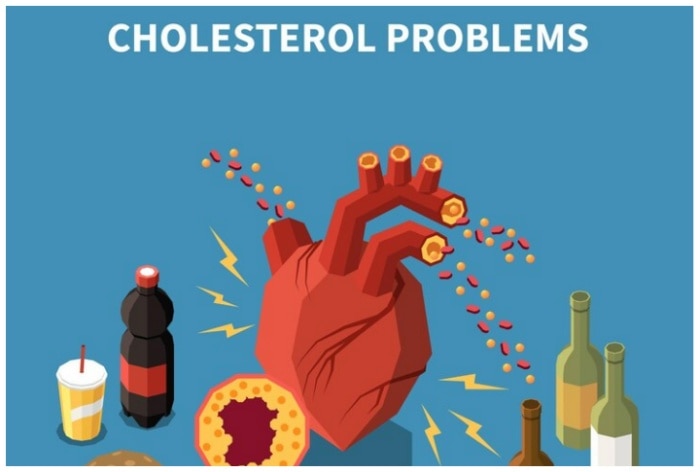High cholesterol symptoms tend to intensify with age if one does not pay heed to their health enough. Therefore, here are few must know changes that people over 50 should be mindful of.
Ageing is a rite of passage and as we grow, so do our organs, which also affects its functioning. The muscles, organs and body eventually get slowed down and are not at their optimal best unless one takes really good care of their body. High cholesterol is increasingly becoming a common problem in the elderly as well as young adults. Cholesterol build-up makes the heart vulnerable. What is cholesterol? It is thick plaque formation in their arteries that leads to blockage of blood and oxygen flow. There are two types of cholesterol – good cholesterol (High-density lipoprotein or HDL) and bad cholesterol (Low-density lipoprotein or LDL). Controlling LDL cholesterol levels is crucial for maintaining heart health, especially as you enter your 50s. Here are six essential lifestyle changes that can help you manage LDL cholesterol levels:
HOW TO CONTROL HIGH CHOLESTEROL IN 50s?
- Heart Healthy Diet: Focus on a balanced diet that emphasises whole, unprocessed foods. Include plenty of fruits, vegetables, whole grains, lean proteins (such as fish, poultry, and legumes), and healthy fats (like olive oil, avocados, and nuts). Limit the consumption of saturated and trans fats, found in red meat, full-fat dairy products, and fried foods. Replace them with healthier alternatives, such as lean meats, low-fat dairy, and sources of unsaturated fats.
- More Dietary Fibre: Foods rich in soluble fibre, such as oats, barley, legumes, fruits, and vegetables, can help reduce LDL cholesterol levels. Aim to incorporate these sources of fibre into your meals and snacks regularly.
- Active Lifestyle: Regular exercise has numerous benefits for heart health, including raising HDL cholesterol levels and lowering LDL cholesterol levels. Additionally, include strength training exercises to build muscle mass and support overall cardiovascular health.
- Weight Management: Excess body weight, especially around the waistline, can contribute to higher LDL cholesterol levels. Focus on achieving and maintaining a healthy weight through a combination of regular exercise and a balanced, calorie-controlled diet.
- Limit Alcohol Consumption: Drinking alcohol in moderation may have some heart health benefits. However, excessive alcohol intake can raise cholesterol levels and contribute to other health problems. If you choose to drink alcohol, limit your consumption to moderate levels, which means up to one drink per day for women and up to two drinks per day for men.
- Quit Smoking: Smoking damages blood vessels, lowers HDL cholesterol, and raises LDL cholesterol. Quitting smoking is one of the most impactful changes you can make for your overall health, including your cardiovascular health.
It’s also important to regularly monitor your cholesterol levels and consult with a healthcare professional for personalised advice and guidance. They may recommend additional interventions, such as medication, based on your individual risk factors and cholesterol levels.

